Is a Black Light a UV Light?
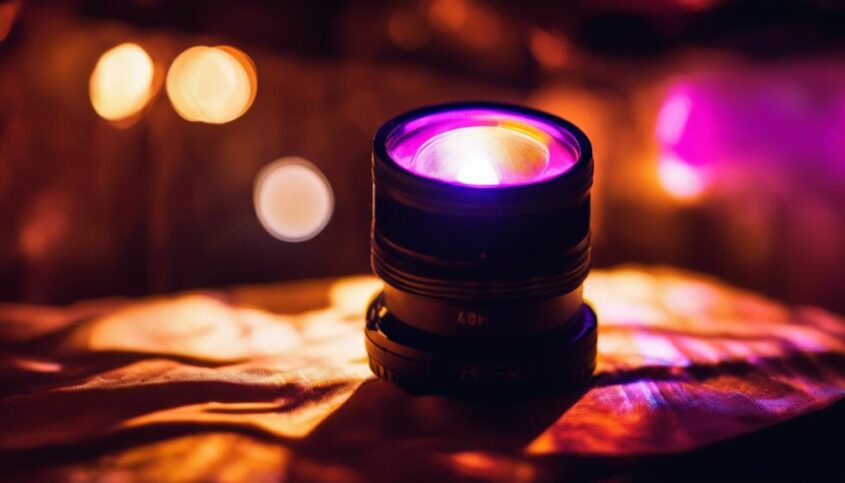
Yes, a black light is a type of UV light, specifically emitting ultraviolet (UV) light in the UVA spectrum. It falls within the UV light category alongside UVA, UVB, and UVC rays. Black lights emit UVA light around 365 nanometers, distinguishing them from UV lights that have a broader range of UVA, UVB, and UVC wavelengths. Understanding the nuances between black lights and UV lights can provide insights into their different applications and safety considerations. For a deeper understanding of how black lights work and their various applications, explore further into the world of ultraviolet light.
Key Takeaways
- Black lights emit UVA light, a type of UV light.
- UV lights encompass UVA, UVB, and UVC rays.
- Black lights convert UV light into visible or longwave UV light.
- UV lights have various applications from disinfection to forensics.
- Proper safety measures are essential when working with UV lights.
What Is a Black Light?
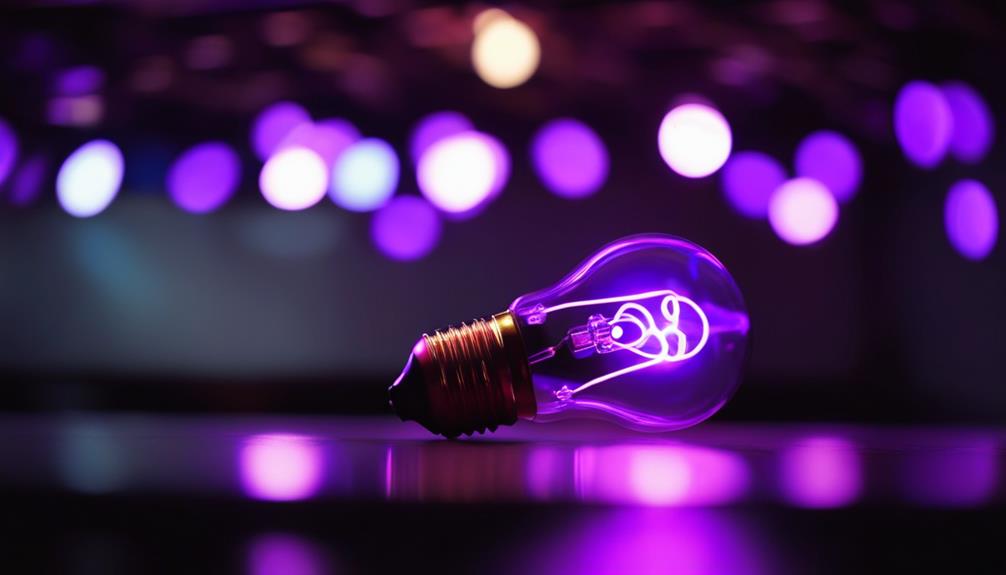
A black light, also known as ultraviolet (UV) light, is a type of light that emits ultraviolet radiation, specifically in the UVA spectrum. These lights are designed to produce electromagnetic radiation with wavelengths shorter than visible light, making them ideal for various applications. Black lights are commonly used in forensics, where they help detect bodily fluids or substances that fluoresce under UV light. Additionally, they have found popularity in entertainment settings, enhancing the glow of fluorescent materials in clubs, parties, and art installations.
One of the key features of black lights is their ability to make certain substances glow or fluoresce when exposed to them. This property has led to their use in counterfeit detection, as many legitimate documents and currencies contain fluorescent elements that become visible under UV light. In the medical field, black lights are utilized to diagnose certain skin conditions or infections that may not be easily visible to the naked eye. The versatility of black lights continues to inspire innovative uses across various industries.
Understanding UV Light
Understanding UV light is essential for distinguishing between its different types, such as UVA, UVB, and UVC. By grasping the basics of UV light, one can debunk common misconceptions surrounding black lights and their association with UV radiation. This discussion will shed light on the characteristics and uses of UV light, separating fact from fiction.
UV Light Basics
Gaining a foundational understanding of UV light is essential for comprehending its uses and potential risks. UV light, part of the electromagnetic spectrum, is categorized into UVA, UVB, and UVC rays based on wavelength. UVA, with the longest wavelength, is commonly associated with tanning beds and some types of black lights. UVB, medium-wavelength rays, are primarily known for causing sunburn and skin damage. UVC, the shortest wavelength, is filtered by the Earth's atmosphere and is often used for germicidal purposes due to its ability to inactivate microorganisms. Understanding the basics of UV light enables the development of innovative applications in various fields, from medical sterilization to UV curing in manufacturing processes.
Black Light Misconceptions
Misconceptions about black lights often stem from a lack of understanding of their relationship to UV light. One common misconception is that black lights emit black or invisible light, whereas they actually emit ultraviolet (UV) light that is outside the visible spectrum. Another misconception is that black lights are harmful because they emit UV radiation. However, the UV light emitted by black lights is mostly long-wave UVA, which is less harmful compared to short-wave UVB or UVC. Understanding that black lights are essentially UV lights that cause certain materials to fluoresce can help dispel these misconceptions. By demystifying the properties and effects of black lights, we can appreciate their unique applications in various fields such as entertainment, forensics, and scientific research.
Comparing Wavelengths
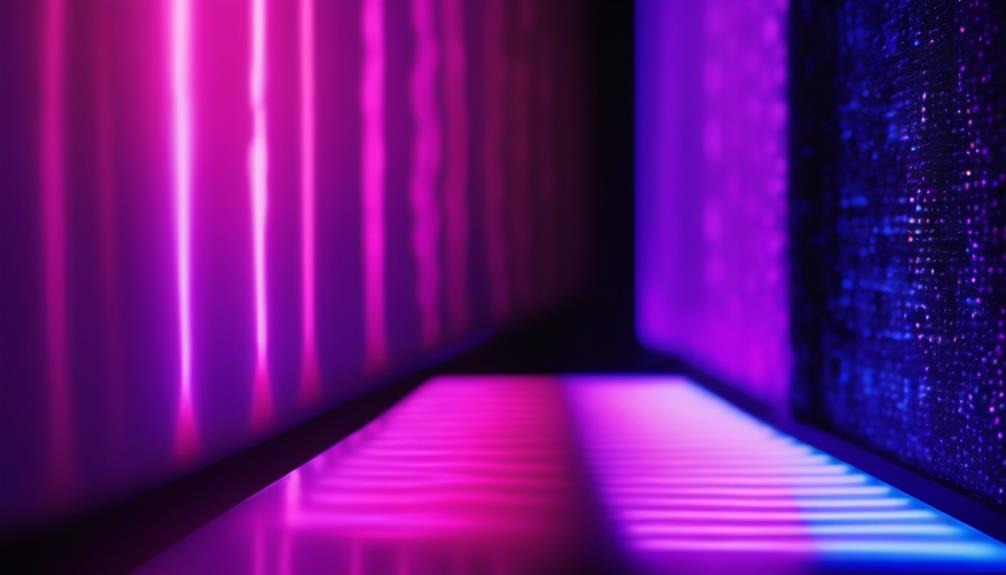
When comparing wavelengths between UV light and black light, it's crucial to note the distinct differences in the range of wavelengths each emits. While UV light falls within the spectrum of 10-400 nanometers, black light typically emits wavelengths around 365 nanometers. Understanding these disparities is essential in distinguishing the specific applications and effects of each type of light source.
Wavelength Differences
A fundamental distinction between a black light and a UV light lies in their respective wavelengths, crucial in determining their distinct functionalities. Black lights typically emit ultraviolet (UV) light with longer wavelengths around 365 nanometers, falling within the UVA spectrum. Conversely, traditional UV lights have a broader range, including UVA, UVB, and UVC wavelengths, with UVC being the shortest and most harmful to living organisms. The variance in wavelengths leads to diverse applications: black lights are commonly used in entertainment, forensics, and insect attraction, while UV lights find application in sterilization, medical treatments, and detecting counterfeit currency. Understanding these wavelength differences is key to harnessing the unique capabilities of each type of light source.
UV Vs Black Light
The comparison between UV light and black light wavelengths illuminates their distinctive properties and applications. Ultraviolet (UV) light has shorter wavelengths, ranging from 100 to 400 nanometers, while black light primarily emits UVA wavelengths, around 315 to 400 nanometers. UV light is further categorized into UVA (long-wave), UVB (medium-wave), and UVC (short-wave), each with varying effects on materials and organisms. In contrast, black light, commonly used in entertainment and detection applications, fluoresces materials that contain phosphors when exposed to its UVA radiation. Understanding these differences is crucial for selecting the appropriate light source for specific purposes, whether it be sterilization, counterfeit detection, or creating captivating visual effects. Both UV and black light offer unique benefits depending on the desired outcome, making them valuable tools in various industries.
How Do Black Lights Work?
Utilizing a specialized phosphor coating that converts ultraviolet light into visible light, black lights work by emitting ultraviolet radiation that is typically not visible to the human eye. This process involves the conversion of shortwave UV light into longwave UV light or visible light through fluorescence. When the UV light hits the phosphor coating on the black light bulb, it causes the atoms in the coating to become excited. As these atoms return to their normal state, they release energy in the form of visible light, creating the distinctive glowing effect associated with black lights.
The key to the effectiveness of black lights lies in their ability to emit UV light in the UVA spectrum, specifically around 315-400 nanometers. This wavelength range triggers fluorescence in certain substances, causing them to glow brightly under black light. This property makes black lights valuable tools in various applications, from detecting counterfeit currency and analyzing minerals to creating captivating visual effects in artistic and entertainment settings.
UV Light Applications
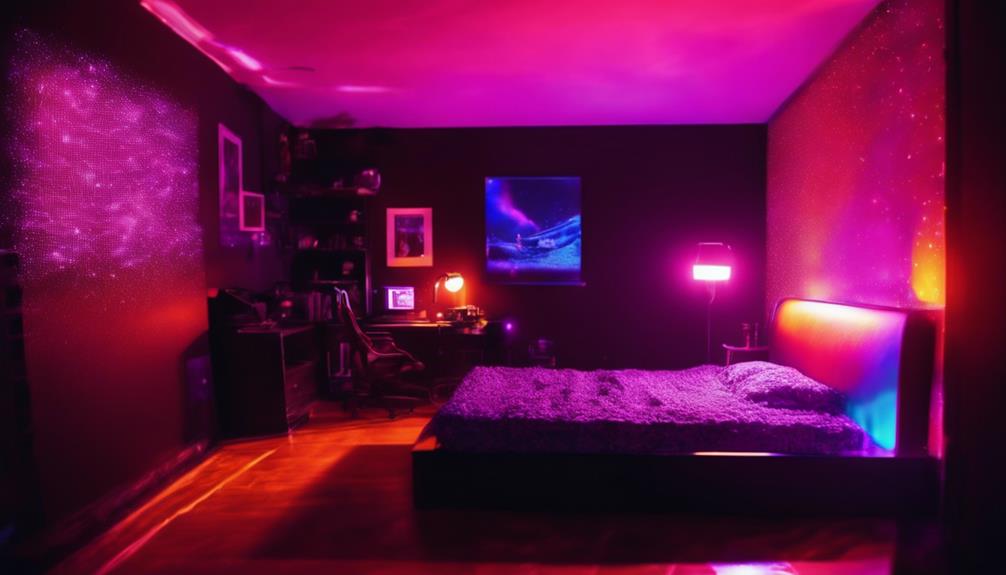
Embracing the versatile nature of ultraviolet light, its applications span across various industries and fields. In the healthcare sector, UV light is utilized for disinfection purposes, effectively killing bacteria, viruses, and other pathogens. This technology is also employed in water treatment facilities to ensure water safety by eliminating harmful microorganisms. Moreover, UV light finds applications in the field of forensics, where it is used to detect bodily fluids and other evidence that may not be visible to the naked eye.
In manufacturing and agriculture, UV light is harnessed for curing adhesives, coatings, and inks, as well as for pest control and crop enhancement. The entertainment industry capitalizes on UV light for creating special effects in theaters, clubs, and theme parks. Additionally, UV light is integral in semiconductor manufacturing for processes like lithography and wafer inspection.
As technology advances, the applications of UV light continue to expand, driving innovation and progress across a multitude of sectors.
Safety Concerns and Precautions
Ensuring proper safety measures when handling ultraviolet light is paramount in various industries and settings. UV light, while beneficial in numerous applications, can pose risks if not managed correctly. Here are three key safety concerns and precautions to be mindful of:
- Eye Protection: UV light can cause damage to the eyes, leading to conditions such as cataracts or corneal sunburn. It is essential to wear appropriate protective eyewear that blocks UV radiation when working with UV lights.
- Skin Protection: Prolonged exposure to UV light can result in skin damage, including sunburn and an increased risk of skin cancer. Utilizing protective clothing that covers the skin and applying sunscreen to exposed areas can help mitigate these risks.
- Ventilation: Some UV light sources can produce ozone, a gas that can be harmful when inhaled. Ensuring adequate ventilation in areas where UV lights are used can help prevent the buildup of ozone and maintain a safe working environment.
Common Uses of Black Lights
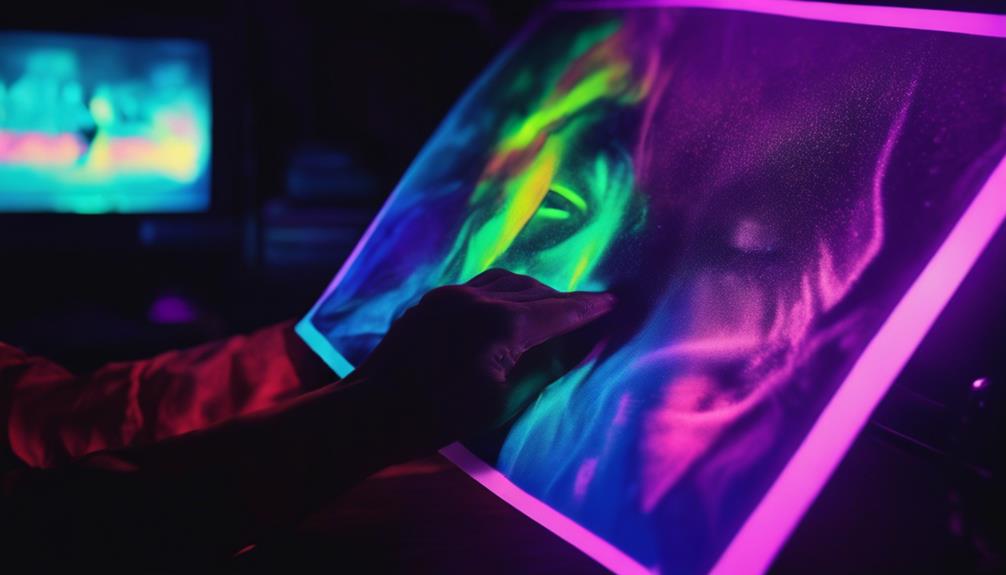
Black lights are commonly employed in various fields for their unique ability to detect substances that fluoresce under ultraviolet light. One of the most well-known uses of black lights is in the realm of forensics, where they are utilized to uncover trace evidence such as bodily fluids, fibers, or other materials that may be missed by the naked eye. In the entertainment industry, black lights are frequently used to create stunning visual effects in theaters, nightclubs, and theme parks. Additionally, black lights play a crucial role in the detection of counterfeit money and documents, as certain security features fluoresce under ultraviolet light. In the field of medicine, black lights are utilized to diagnose fungal infections on the skin, corneal scratches in the eye, and to detect counterfeit drugs. Furthermore, black lights find applications in the inspection of antiques and artwork, where they can reveal hidden repairs or forgeries that are otherwise undetectable.
Myth Busting: Black Light Vs. UV Light
In clarifying the distinction between black lights and UV lights, it is essential to understand their unique properties and applications. Black lights emit ultraviolet (UV) light but are designed to produce primarily UVA light wavelengths, which are closer to visible light on the electromagnetic spectrum. On the other hand, UV lights encompass a broader spectrum, including UVA, UVB, and UVC wavelengths, each with distinct characteristics and applications. To debunk the common misconception that black lights and UV lights are the same, consider the following points:
- Wavelength Range: Black lights primarily emit long-wave UVA light, whereas UV lights can emit UVA, UVB, or even germicidal UVC light.
- Applications: Black lights are often used for entertainment, art, and counterfeit detection, while UV lights find applications in sterilization, medical treatments, and forensics.
- Safety Concerns: Due to the potential harm from exposure to UVB and UVC light, proper safety measures such as protective gear and exposure limits are crucial when using UV lights.
Understanding these distinctions is vital for utilizing both black lights and UV lights effectively and safely.
Frequently Asked Questions
Can Black Lights Cause Skin Cancer Like UV Lights?
Exploring the link between black lights and skin cancer, research suggests that ultraviolet light exposure, whether from black lights or UV lights, can increase the risk. Protective measures, such as sunscreen, are crucial.
Are All Black Lights the Same in Terms of Wavelength?
All black lights are not the same in terms of wavelength. The wavelength of light emitted by a black light can vary depending on the type of bulb used. It is crucial to choose the right black light for specific applications.
Can Black Lights Be Used to Detect Counterfeit Money?
Black lights can effectively detect security features in banknotes, aiding in the identification of counterfeit money. By illuminating the currency with UV light, security features such as watermarks and security threads become visible, safeguarding against fraudulent transactions.
Are There Any Health Risks Associated With Prolonged Exposure to Black Lights?
Prolonged exposure to black lights can pose health risks such as eye damage, skin irritation, and potential harm from inhaling mercury if using fluorescent bulbs. It's essential to limit exposure and use protective measures.
Can Black Lights Be Used to Sanitize Surfaces or Kill Bacteria?
Black lights can be used to sanitize surfaces effectively by killing bacteria through UV radiation. This method, known as ultraviolet germicidal irradiation, has been shown to be a powerful tool in reducing microbial contamination on various surfaces.




